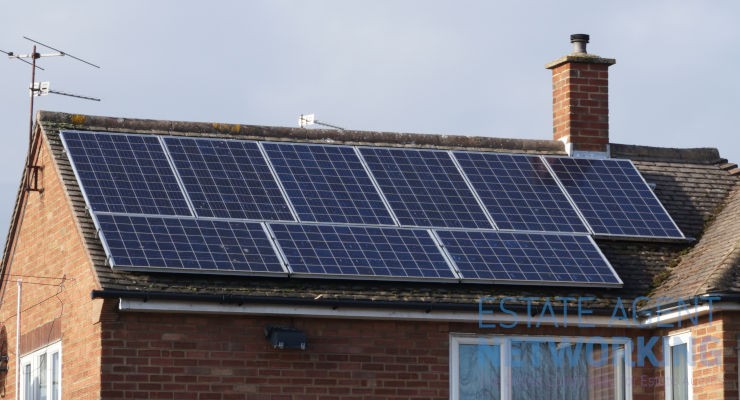What to do after a bad property survey
As every property buyer knows, getting a survey done before you exchange contracts can save you money, time and stress. While the results of the home survey are always awaited with a certain amount of trepidation, most of the time there’s nothing major to worry about. But what if the surveyor does report back with some bad news you weren’t expecting? Let’s take a look at the options.
Reading your survey
The objective of any building survey is to give the prospective buyer an independent account of the property’s condition. Depending on the size, type and age of the building, the Royal Institution of Chartered Surveyors (RICS) offer three levels of home survey – a basis RICS Condition Report, a mid-level RICS HomeBuyer Report and an in-depth RICS Building Survey.
Getting the results of a home survey should provide answers to many important questions that may affect your decision to purchase. And while everyone hopes for a clean slate, with next to no concerns raised by the surveyor regarding any building defects, every survey report is likely to find something worthy of mention, particularly with older homes.
In most cases, a survey will list the issues found in order of severity and urgency. “One of the benefits of a RICS HomeBuyer Report is that it is written in plain English, not technical jargon, making it more accessible to the layman. To further aid understanding, the Report uses a standardised ‘traffic light system’ of condition ratings to describe the property’s condition and any advice for urgent repairs,” explains Brian Gale Surveyors.
- Red – serious defects and/or urgent repairs have been identified
- Amber – building defect and/or repairs have been identified but they are not considered to be urgent or serious
- Green – no building defects or repair requirements have been identified
With a Building Survey (formerly known as a ‘full structural survey’) you can expect to receive more details about any defects, plus professional advice on the next steps you should take.
Once you’ve read the written report, make a point of going through the findings with your surveyor to gain a more in-depth understanding of the building’s condition, the issues flagged and their implications. Bear in mind that the surveyor’s role is that of a building expert whose job it is to offer professional advice, not to tell you whether to proceed with the purchase. The final decision is yours.
What is a ‘bad’ survey result?
While you can expect the home survey to throw up a few issues and defects, some are worse than others. Concerns such as ancient wiring, outdated heating systems or roof defects may affect the property’s value. Non-standard methods of construction (timber structures, prefab steel or eco builds) may affect your ability to obtain a mortgage. Some defects may be expensive and/or laborious to put right, and some may be a total deal breaker.
Among the ‘red flag’ category of building problems that a survey might uncover are:
- Subsidence
When the ground underneath the property’s foundations moves, the structural integrity of the building may be compromised. Stepped or diagonal cracks and misaligned door and window frames are among the tell-tale signs. Subsidence can be remedied through underpinning the building – a costly undertaking that may leave the owner unable to get building insurance afterwards.
- Japanese Knotweed
This highly invasive plant affects around 5% of UK property. It has underground roots that will damage anything in its path including brickwork and concrete. The Environment Agency describes Japanese Knotweed as “indisputably the UK’s most aggressive, destructive and invasive plant.” It’s hard to eradicate, requiring a determined approach by a professional service, and can render a property unmortgageable.
- Damp issues
Damp or mould patches are often detectable on ceilings and walls, but a lot of the time the evidence may be hidden under floorboards or in other inaccessible places. Damp can be treated with a variety of methods and techniques, but depending on how extensive and advanced the damage is, the cost can run into thousands.
- Dry Rot
Dry rot is a type of fungus that attacks and weakens timber building elements in a property, including structural timbers. It can spread rapidly and will need professional attention to properly diagnose and remedy the problem, which can be expensive.
- Woodworm
Caused by beetle larvae burrowing into timber, a woodworm infestation can cause real structural damage to a building. Small round holes on the surface of the wood and the presence of fine, powdery dust around these holes. Timber boards and joists may have crumbly edges. A woodworm specialist will identify the type of woodworm present and apply the appropriate treatment.
How best to proceed?
Receiving bad news about the property you are looking forward to buying is disheartening, to say the least. But it need not be the end of the road, and neither is now the time to panic and make any rash decisions that you might later regret. Your best bet is to sleep on it, calmly talk through the sticking points with your surveyor and your mortgage company, and get a real understanding for what it actually means.
You should also speak to the seller about the findings. He may not be aware of the extent of the issues that are compromising the sale, or he may have helpful insights. It’s important that he is kept fully informed at this stage of the negotiations, goodwill intact.
Commission a supporting survey to take a closer look at the specific defects identified to gain more clarity of what the problem is and how to go about remedying it. Get the issues investigated further by a specialist independent surveyor, along with cost estimates. Also call in a suitable builder to give you a quote for the works.
When you are in possession of the full facts and figures of the problem, you are ready to make your next move, which is likely to be one of these three options:
- Explain to the seller the extent of the problem and make it a condition of sale that the defect is fixed to your satisfaction before contracts are exchanges.
- Use your additional research as a bargaining tool to renegotiate the purchase price to take account of the serious building problems unearthed in the survey. In other words, take the cost of the repair work off the price and lower your offer accordingly.
- If neither are acceptable and you cannot come to an agreement with the seller, or the idea of major building works puts you off the purchase altogether, you can always walk away and find a less troubled home elsewhere.





